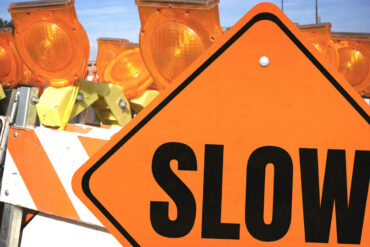
Construction Delay: 10 Things Design Professionals Need to Consider
In Construction onRead moreArticle provided courtesy of Gary Prather, founder and president of Architects and Engineers Dispute Resolution Group.
0
Thoughts on Managing Site Visits
In Construction onRead moreConstruction phase services are an important element of any design contract involving construction. Design documents cannot be effectively implemented in a vacuum.

Licensing Notice: Structural Engineering Licenses Required for Certain Projects
In Claims onRead moreDo you have the proper licensure? In some states, a licensed professional engineer (PE) is not able to engage in structural engineering without being a licensed structural engineer (SE).

Claims Retrospective: Arbitrary Deadlines as a Scare Tactic
In Insurance onRead moreA common scare tactic by claimants' attorneys is to send a demand or claim letter that includes an arbitrarily set deadline by which a response "must" be provided.

Construction Defect Statutes Outline Procedures for Litigation Against Contractors
In Claims onRead moreMost states have enacted notice of claim, an official intent to file a claim, for construction defects statutes. Commonly referred to as Right to Repair/Cure statutes, they establish a pre-litigation dispute resolution mechanism in certain construction defect matters that generally involve the claimant filing a notice of claim with the contractor, which often includes design professionals and engineers as defined by statute.

Best Practice in Responding to Inquiries from State Agencies
In Claims onRead moreA recent trend in the rise of inquiries from state agencies has been observed in 2018 and 2019. These "inquiries" are not formal complaints, but rather informal investigations into projects. Often, state investigators will contact an engineer or design professional directly via email or phone to "respond to a few questions."

Engineers’ Duties Outside of a Written Contract: Avoiding Pitfalls Through Proper Documentation
Read moreAs with any profession, a contract for engineering services specifies the terms of agreements, services to be exchanged, deadlines, and estimated costs. It also outlines the specific duties of the project's engineering firm.

Claims Retrospective: The Risks in Providing Professional Services to a Party Engaged in Litigation
Read moreRequests for professional engineering services by a party already in litigation are not unusual and can present unique challenges. The parties embroiled in litigation are more likely to be emotional, frustrated, upset and/or defensive about the subject project, and pursuing a rational resolution may be clouded by the parties' intransigent positions.

Your Document Retention Policy Should Be Based on the Applicable Statute of Repose
In Claims onRead moreThe most common question that comes up when evaluating a document retention policy seems to be, "What is the statute of limitations?"

Claims Retrospective: Maintaining Proper Licensure
In Claims onRead moreNot holding the proper licensure can cause complications for an engineer’s claims defense and professional liability coverage.
